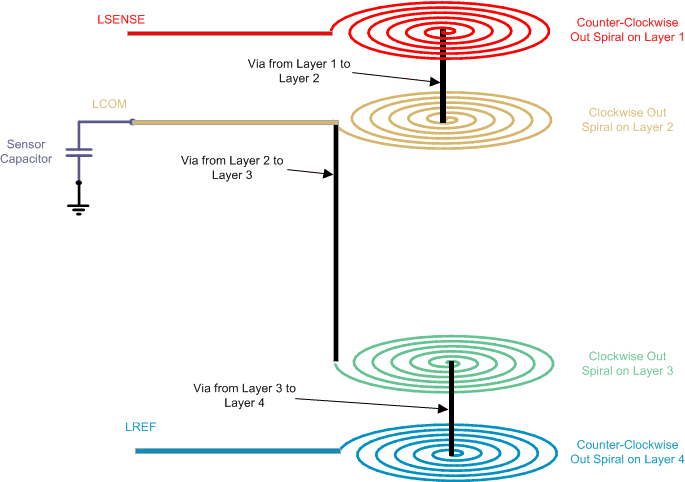SNOSCZ7B December 2015 – April 2024 LDC0851
PRODUCTION DATA
- 1
- 1 Features
- 2 Applications
- 3 Description
- 4 Pin Configuration and Functions
- 5 Specifications
- 6 Detailed Description
- 7 Application and Implementation
- 8 Device and Documentation Support
- 9 Revision History
- 10Mechanical, Packaging, and Orderable Information
7.4.2.2 Stacked Coils
Use of stacked coils may be desirable to conserve board space and to prevent false triggering when a target approaches from the bottom. A 4 layer PCB with a thick inner layer is recommended to achieve the best results. It is important to note the direction and polarity of the sense coil and reference coils with respect to each other. The recommended configuration is shown below.
 Figure 7-11 Stacked Coil Recommended Connections and Direction
Figure 7-11 Stacked Coil Recommended Connections and Direction